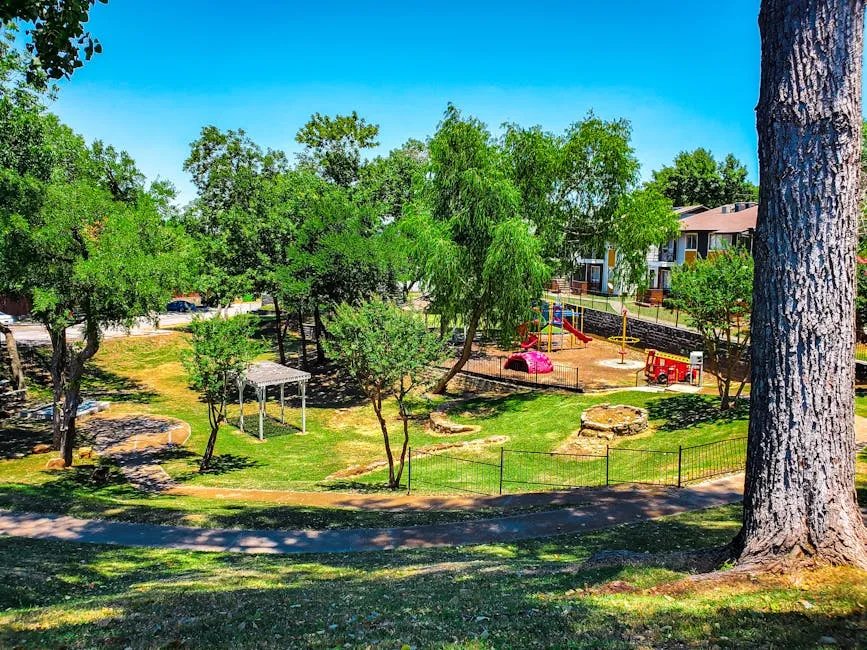Introduction
Crime statistics serve as a crucial window into community safety. They help residents, local officials, and law enforcement understand the current state of crime and identify areas needing attention. When we look at Amarillo, Texas—a city famous for its vibrant culture and, unfortunately, notable crime rates—understanding these figures becomes even more essential. Amarillo is often marked by its high crime statistics, raising eyebrows and concerns among its residents.
The significance of monitoring crime rates is twofold: first, it can assist in proactive measures to improve safety, and second, it helps residents make informed decisions about their neighborhoods. According to recent data, Amarillo’s crime rates are substantially higher than both the national and state averages. With a total crime rate of 42.47 per 1,000 residents, Amarillo is in the top tier of cities with elevated crime statistics. The chances of becoming a victim of either violent or property crime stand at approximately one in 24, a statistic that doesn’t paint a rosy picture.
This article aims to provide a comprehensive analysis of Amarillo’s crime statistics, shedding light on trends, challenges, and community impacts. We will delve into specific categories of crime and compare these statistics with national and Texas state averages. By offering an in-depth examination, residents can better understand the risks and nuances of crime in their city, ultimately fostering a more informed and engaged community.

Speaking of engagement, if you’re looking to stay safe in your own home, consider a Ring Video Doorbell Pro 2. It’s like having a security guard at your front door, minus the awkward small talk!
Overview of Crime Statistics in Amarillo
Current Crime Rates
Amarillo has gained a reputation for its high crime rates, and the numbers don’t lie. As of the latest reports, the total crime rate in Amarillo is approximately 42.47 per 1,000 residents. Breaking this down further, we can observe that the violent crime rate is 7.64 per 1,000 residents, while property crime sits at a staggering 34.83 per 1,000 residents. In stark contrast, the national average for violent crime is around 4 per 1,000 residents, making Amarillo’s rate significantly higher.
To put things into perspective, about 96% of communities in Texas boast lower crime rates than Amarillo. The statistics reveal that approximately one in 131 people in Amarillo may fall victim to violent crime, while the property crime rate escalates the odds to one in 29. This is a wake-up call for residents who may underestimate the risks in their neighborhoods.

Understanding the implications of these statistics is crucial for community awareness. For more insights, check out the Amarillo crime statistics.
While we’re on the topic of safety, consider investing in a Home Security Camera System with 8 Channel DVR. It’s like having an extra set of eyes on your property—perfect for catching that neighbor’s cat stealing your garden gnomes!
Historical Crime Trends
Examining historical crime trends in Amarillo reveals a complex picture. Over the last decade, the city has seen fluctuations in both violent and property crimes. While the overall crime rate has experienced a slight decrease in recent years, certain categories have shown alarming spikes. For instance, violent crimes have notably increased, with homicide rates drawing particular concern.
In the past year alone, Amarillo reported 23 homicides, a number that raises questions about safety in the community. Additionally, property crimes, particularly theft and burglary, have remained prevalent. The data indicates that while there are efforts to combat crime, the challenges persist, emphasizing the need for continuous community engagement and law enforcement initiatives.
To better protect yourself, consider a Personal Safety Alarm with LED Light. It’s like carrying a tiny bodyguard that can make some serious noise when you need it!
The implications of these trends are significant. High crime rates can lead to decreased property values, increased insurance rates, and a general sense of insecurity among residents. Understanding these trends not only helps in assessing current safety levels but also aids in determining future strategies for improvement.
In conclusion, Amarillo’s crime statistics provide crucial insights into the challenges faced by the community. By understanding the current rates and historical trends, residents can work collaboratively with local authorities to foster a safer environment for everyone. As we move forward in this discussion, we will explore specific categories of crime in greater detail, further illuminating the issues at hand.

Breakdown of Violent Crime Statistics
Types of Violent Crimes
Violent crimes are no laughing matter, yet they deserve our attention. They include murder, rape, robbery, and assault. Understanding these categories helps paint a clearer picture of safety in Amarillo.
Murder: This tragic crime has been on the radar recently. In Amarillo, there were 23 reported murders last year. This translates to a rate of 0.11 per 1,000 residents. When you compare this to the national average of around 6.3 per 100,000, Amarillo’s rate looks concerning.
Rape: Rape is another serious crime affecting community safety. Amarillo recorded 197 incidents, equating to 0.98 per 1,000 residents. Nationally, this figure stands at 40.0 per 100,000, highlighting a significant issue that needs addressing.
Robbery: This crime, often fueled by desperation, saw 199 reported incidents in Amarillo, or about 0.99 per 1,000 residents. Comparatively, the national average hovers around 66.1 per 100,000, suggesting Amarillo has its work cut out.
Assault: The most common violent crime in Amarillo is assault, with a staggering 1,119 incidents. This translates to roughly 5.56 per 1,000 residents. Nationally, the rate is about 282.7 per 100,000. Clearly, Amarillo faces a pronounced challenge in this category.
High violent crime rates impact how residents perceive their community. A city with increasing violence can lead to a culture of fear. This perception can deter new residents and businesses, stunting economic growth. The challenge lies in transforming this narrative, making Amarillo a safer place for everyone.

Victimization Statistics
Now, let’s talk about the chances of becoming a victim of violent crime in Amarillo. The statistics paint a somewhat grim picture. Residents face about a 1 in 131 chance of being a victim of violent crime. This stark statistic is alarming, especially when juxtaposed with the national average of about 1 in 222.
Demographic factors also play a role in crime rates. Age is one factor; younger people are often more vulnerable. Men, statistically, are more likely to be victims of violent crime compared to women. Socioeconomic status also influences these rates. Areas with higher poverty levels often see increased crime rates.
Amarillo’s poverty rate stands at 15.4%—slightly above the national average. This economic strain can lead individuals to resort to illegal activities, further exacerbating crime. The interplay of these demographic factors creates a complex web, influencing both safety perceptions and actual crime rates.
Community initiatives are crucial in addressing these statistics. Engaging residents in crime prevention programs can enhance safety. Collaboration among law enforcement, local businesses, and residents can create a safer environment. By fostering a sense of community, Amarillo can work towards reducing these alarming crime statistics and improving the overall quality of life for its residents.
As we move forward, it’s essential to remain vigilant and proactive. The safety of Amarillo hinges on community awareness and action. Together, we can strive to reduce these numbers and ensure a safer future for everyone.

Trends in Property Crime
Property crime in Amarillo has seen a rollercoaster of fluctuations in recent years. While some years showcase a decline, others reveal sharp increases. For instance, in 2023, property crime decreased by 11%, with burglary rates dropping nearly 20%. This kind of drop is like finding a $20 bill in your old jeans—unexpected but very welcome!
However, the challenge remains. The property crime rate in Amarillo is still alarmingly high, sitting at around 34.83 per 1,000 residents. To put this in perspective, the national average is significantly lower, leaving residents feeling a bit like they’re playing a game of whack-a-mole with thieves.
Economic conditions play a significant role in these trends. Amarillo’s poverty rate hovers around 15.4%, slightly above the national average. Economic stress motivates some individuals to resort to property crimes, viewing theft as a viable option for survival. Combine that with rising costs of living, and it’s no wonder property crimes remain prevalent.
Additionally, community demographics impact crime rates. Areas with younger populations often report higher property crime, likely due to the youthful exuberance—or recklessness—of some individuals. In neighborhoods with high mobility rates, like college towns, crime can spike as transient populations come and go.
Understanding these factors is crucial for Amarillo residents. It’s essential to remain vigilant and support community efforts aimed at reducing property crime. With the right initiatives, such as neighborhood watch programs and community engagement, Amarillo can hope to change these statistics for the better.

Neighborhood Safety Overview
Safest Neighborhoods in Amarillo
When it comes to feeling safe in Amarillo, certain neighborhoods shine brighter than others. Areas like Bushland, Quail Creek, and the Colonies/Greenways boast some of the lowest crime rates in the city. These neighborhoods have become the envy of many, and for good reason!
Bushland, for instance, is not just a pretty face; it offers a strong sense of community and safety. Residents often participate in local events and initiatives that foster a secure environment. Quail Creek, with its well-kept parks and friendly neighbors, feels like a suburban dream. The Colonies/Greenways area is known for its active neighborhood watch programs, making it a safe haven for families.
Community initiatives play a significant role in enhancing safety. Local organizations often partner with law enforcement to promote crime prevention strategies. These include hosting events to educate residents about safety measures and encouraging neighborhood patrols. It’s like a friendly neighborhood watch, but instead of capes, they wear T-shirts!

High-Crime Areas
On the flip side, some neighborhoods in Amarillo are grappling with higher crime rates. Areas such as East Amarillo and parts of the downtown area are often in the spotlight for their crime statistics. The challenges in these neighborhoods range from economic difficulties to limited access to resources.
Residents in high-crime areas often feel caught between a rock and a hard place. Many face issues like poverty and lack of employment opportunities, which can contribute to crime. However, community responses are gaining momentum. Local organizations are working tirelessly to implement youth programs, job training, and support services to uplift these neighborhoods.
Engagement between residents and law enforcement has also improved. Police departments are focusing on building trust within these communities, aiming to create a collaborative approach to crime prevention. With dedicated efforts, these neighborhoods can start to shift the narrative, turning places of concern into communities of safety.
By understanding both the safest neighborhoods and those facing challenges, Amarillo residents can participate in efforts to improve their city collectively. Together, they can work towards a safer, more connected community where everyone feels at home.

Community Perspectives on Crime
Local Opinions on Safety
In Amarillo, feelings about safety can be like a rollercoaster ride—up and down, twist and turn! Recent surveys indicate that a significant portion of residents feels uneasy about their safety. Surprisingly, 73% of survey respondents believe there’s too much crime, making them hesitant to walk alone at night. Meanwhile, a mere 27% expressed feeling safe enough to stroll after dark.
This gap between perception and reality can be quite bewildering. While the statistics tell one story—Amarillo boasts a total crime rate of 42.47 per 1,000 residents—the emotional response of its citizens often paints a different picture. Many residents may perceive crime as more rampant than it truly is, influenced by media coverage and personal experiences. This discrepancy can lead to a heightened sense of fear, even if crime statistics suggest a different trend.
For instance, while violent crime in Amarillo is concerning, it’s essential to recognize that the city has made strides in crime reduction efforts. However, these positive changes may not yet resonate with the community. Addressing these perceptions through open dialogues and community outreach can help bridge the gap between statistics and feelings of safety.

Response from Law Enforcement
When it comes to combating crime, the Amarillo Police Department (APD) is on the front lines. Their approach emphasizes community policing, prioritizing building trust between officers and residents. Engaging in crime reduction programs, the APD focuses on collaboration with the community to tackle safety concerns head-on.
One of the standout initiatives is the Neighborhood Watch program, which empowers residents to take an active role in monitoring and reporting suspicious activities. This program is like the neighborhood superhero, where residents become the eyes and ears of their community. Additionally, the APD conducts regular community meetings to discuss safety strategies and gather feedback, ensuring that residents’ voices are heard.
The APD has also implemented outreach programs targeting at-risk youth, aiming to divert them from crime before it starts. By fostering relationships with schools and local organizations, they’re creating a safety net for the community’s younger members. These proactive measures are crucial for reducing crime and instilling a sense of security among Amarillo residents.
In summary, while the crime statistics in Amarillo may raise eyebrows, the concerted efforts by law enforcement and community engagement initiatives are steps in the right direction. By addressing perceptions and fostering trust, Amarillo can work towards a safer environment for all its residents.

Comparative Analysis with Other Cities
Crime Rate Comparisons
When we stack Amarillo’s crime rates against similar-sized cities in Texas and beyond, the numbers can be quite revealing. Amarillo’s overall crime rate stands at a staggering 42.47 per 1,000 residents, significantly higher than the national average. For a clearer picture, let’s compare it with a few Texas counterparts.
Take Lubbock, for instance. Lubbock’s crime rate is lower, hovering around 36.5 per 1,000 residents. Similarly, cities like Abilene and Midland also report lower overall crime rates. Amarillo seems to be in the rougher end of the spectrum, as it ranks among the higher crime cities in Texas.
On a national scale, Amarillo does not fare well either. Reports indicate that Amarillo is safer than only about 17% of U.S. cities. This puts Amarillo in a precarious position, where residents face a 1 in 24 chance of becoming a victim of either violent or property crime. Comparatively, cities like Plano and Frisco offer a much safer environment, with crime rates significantly below the national average.
The comparisons showcase Amarillo’s need for continued focus on crime prevention efforts. With many cities successfully reducing their crime rates, Amarillo can learn from these successes and implement similar strategies tailored to its unique challenges.

Factors Influencing Crime Rates
Crime rates vary across cities, and several factors come into play. Let’s break down some of the main influences that can make crime stats do the cha-cha.
Socioeconomic Status: When money gets tight, things can get shady. Areas with high poverty rates often see spikes in crime. Folks struggling to make ends meet might turn to illegal activities to survive. Amarillo’s poverty rate sits at about 15.4%, slightly above the national average. That economic pressure can drive up crime, especially property offenses.
Law Enforcement Effectiveness: A city’s law enforcement plays a significant role in crime rates. When police are visible and responsive, crime tends to decrease. In Amarillo, the effectiveness of the police department can impact residents’ feelings of safety. If officers are engaged with the community, they can deter crime before it happens. Regular community meetings can create a bond, making neighborhoods feel safer.
Community Engagement: Speaking of engagement, a strong community can be a crime-fighting powerhouse. Areas where residents look out for one another often see lower crime rates. Programs like neighborhood watches or community events can foster solidarity. In Amarillo, getting residents involved could be key to turning the tide on crime. When people care about their neighborhood, they’re more likely to report suspicious activities.
Demographics: Age and gender also influence crime rates. Young adults, particularly males, are often involved in higher crime rates. Understanding these demographic trends can help law enforcement tailor their strategies. For instance, programs aimed at youth can redirect energy into positive activities, reducing crime.
Ultimately, crime is a complex issue influenced by a variety of factors. By addressing socioeconomic challenges, enhancing law enforcement engagement, and fostering community spirit, Amarillo can work towards safer streets.

FAQs
What are the current crime rates in Amarillo?
Amarillo’s crime statistics indicate a total crime rate of 42.47 per 1,000 residents. The violent crime rate is approximately 7.64 per 1,000, while property crime stands at 34.83 per 1,000. Residents have a 1 in 24 chance of becoming a victim of crime.
How does Amarillo’s crime rate compare to other Texas cities?
Amarillo’s crime rate is notably higher than many Texas cities. For context, the national average for violent crime is about 4 per 1,000 residents, while Amarillo’s rate is significantly above that. Comparatively, cities like Lubbock and Abilene report lower overall crime rates.
What can residents do to help reduce crime in their neighborhoods?
Residents can engage in community initiatives such as neighborhood watch programs. Staying informed about local crime trends and participating in safety events can also help. Collaborating with local law enforcement fosters a sense of security and encourages proactive crime prevention.
Where can I find more information about crime in Amarillo?
For ongoing updates and detailed information about crime in Amarillo, residents can visit local law enforcement websites like the Amarillo Police Department’s page. Additionally, community resources and crime mapping tools provide valuable insights into safety trends.

As we wrap up, remember that being prepared is key! Consider investing in an Emergency Survival Kit for peace of mind—because you never know when you might need a snack and a first aid kit in a pinch!
Please let us know what you think about our content by leaving a comment down below!
Thank you for reading till here 🙂
All images from Pexels




